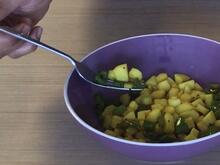Community Supported Agriculture
Buy your food from the people you know.
Community Supported Agriculture, CSA, is a subscription-based farm share. Farms ask their members to subscribe and pay upfront for a season of food from that farm. Often members pick up their shares weekly or maybe have them delivered. Read our free Tip Sheet for Using CSAs.
Common Styles of CSA
- Traditional: Farmers only grow for the CSA members and share divided out.
- Seasonal: CSAs may be open only during a certain season, often summer. Winter CSAs are becoming more common due to greenhouses and other farming methods to lengthen seasons.
- Multiple Farms: More than one farm may partner to offer a wider variety of products.
- Entire Meal: A farm may offer foods from multiple food groups, including proteins and grain, allowing CSA members to make a full meal.
- Set Dollar: Pay a dollar amount at the beginning of the season. As you buy, the farm will deduct food costs from your original total. Shop your way down to $0 by the end of the season.
- Non-Food: Subscriptions for non-food farm items, such as wildflowers, may be available.
Ways to Use CSA Foods
- Add to typical recipes: Foods from a CSA share often include fruits and vegetables. Use them just like foods bought in a grocery store.
- Use timely: Learn which foods are likely to spoil first – such as strawberries and tomatoes – and which foods will last a while – such as potatoes and onions.
- Store well: Learn what foods store best at room temperature – such as potatoes and tomatoes – or in the refrigerator – such as strawberries.
- Preserve extra: The National Center for Home Food Preservation is a research-based source for home preserving information and recipes. Can, freeze, or dry extras from a CSA share before they spoil.
- Try new foods and recipes: Some CSAs grow unfamiliar foods. Your farmer may include recipes for uncommon ingredients with CSA shares or check for recipes from your local Extension offices.
Seasonal Availability
Foods available in a CSA share will vary by the farm and the season. Participating in a CSA is a great learning experience about how foods grow, how weather impacts crop success, and other ups and downs of growing produce on a farm.
Sautéed Kohlrabi with Bell Pepper
(Serves 4)
Ingredients
- 2 tsp vegetable oil
- 2 kohlrabies, peeled and diced
- 1 green bell pepper, diced
- 1/4 tsp ground turmeric
- 1/4 tsp mustard seeds*
- 1/4 tsp salt
- 1 Tbsp lemon juice
Directions
- Add oil to a skillet over medium heat. Tilt skillet to coat with oil.
- When skillet is warm, add kohlrabi, bell pepper, turmeric, mustard seeds, and salt. Stir to combine.
- Cook, stirring continuously, for 3-5 minutes. Vegetables will be heated through, but still crisp.
- Add lemon juice and stir to combine. Serve hot.
*Black mustard seeds were used in this recipe. Yellow mustard seeds can be use too or left out.
Nutritional analysis per serving: 45 calories, 2.5g fat, 160mg sodium, 6g carbohydrate, 3g fiber, 1g protein
References
- Community Supported Agriculture (CSA) Resource Guide for Farmers, NC State Extension, 2020
- Community Supported Agriculture (CSA), Penn State Extension, 2014
- Community Supported Agriculture: New Models for Changing Markets, Agricultural Marketing Services, USDA, 2017
- CSA Models, CSA Solutions Hub, N/D
- National Center for Home Food Preservation, University of Georgia Extension
- Watch Your Garden Grow, University of Illinois Extension
- What’s Cooking? with Mary Liz, University of Illinois Extension
